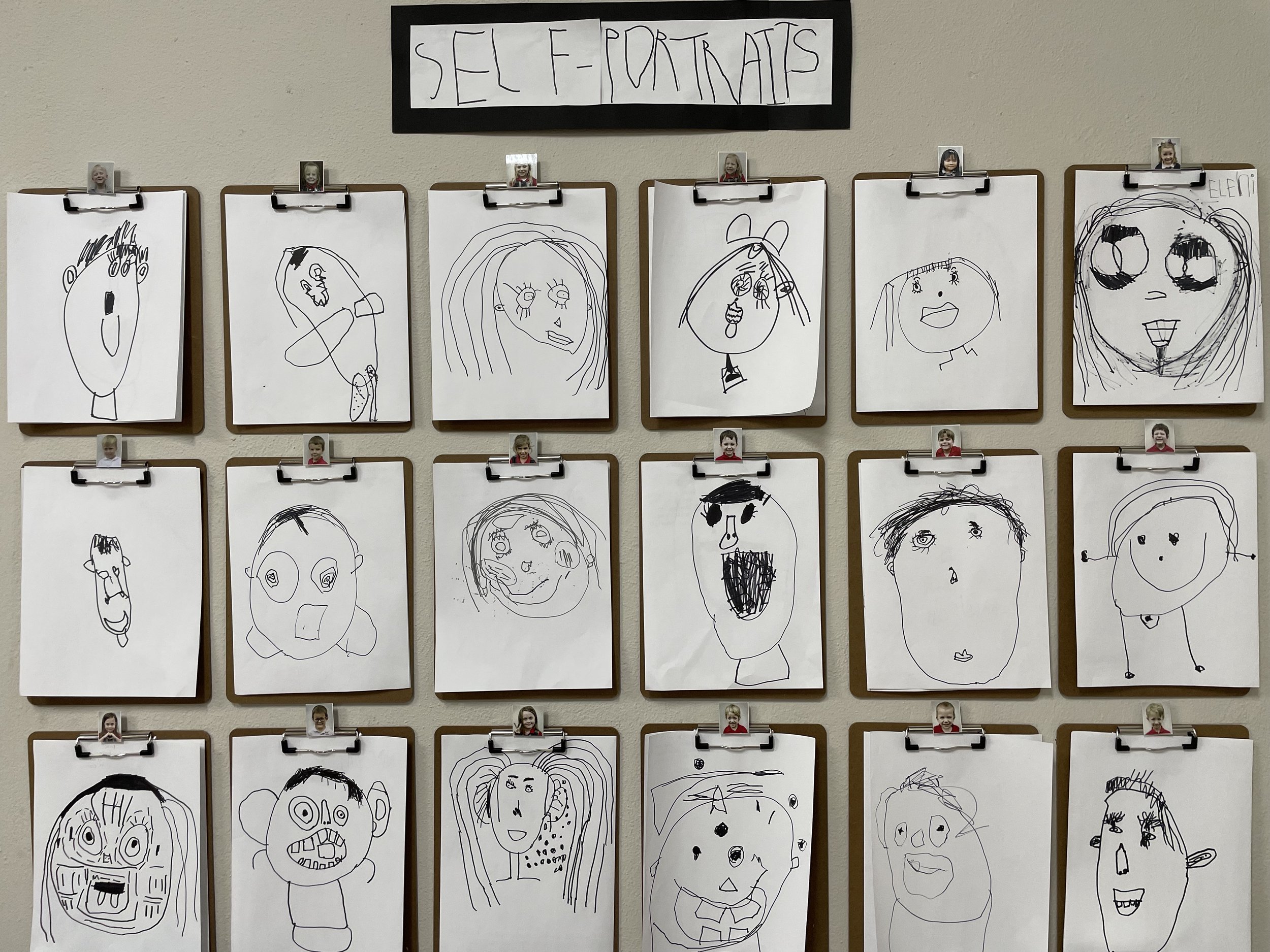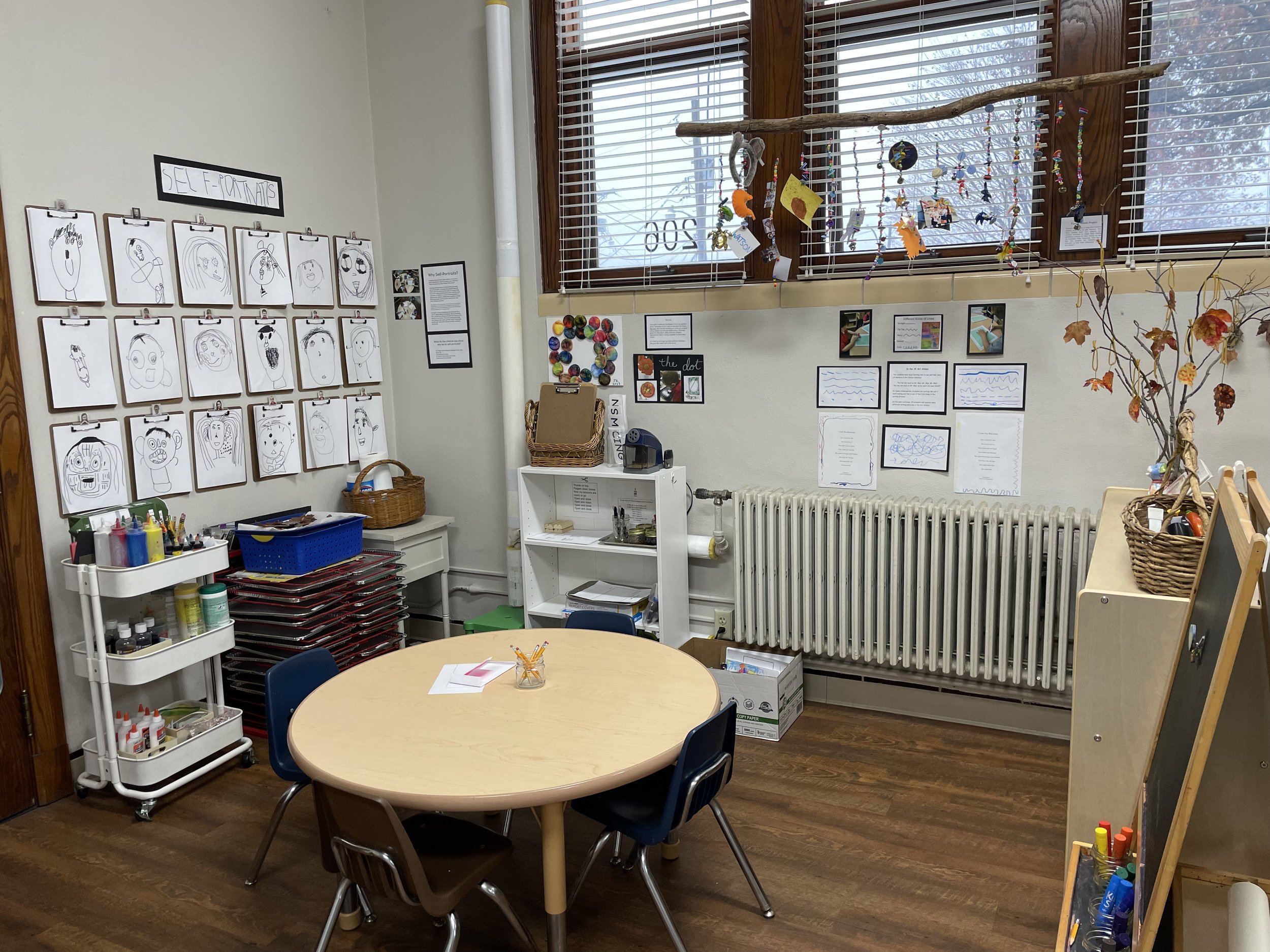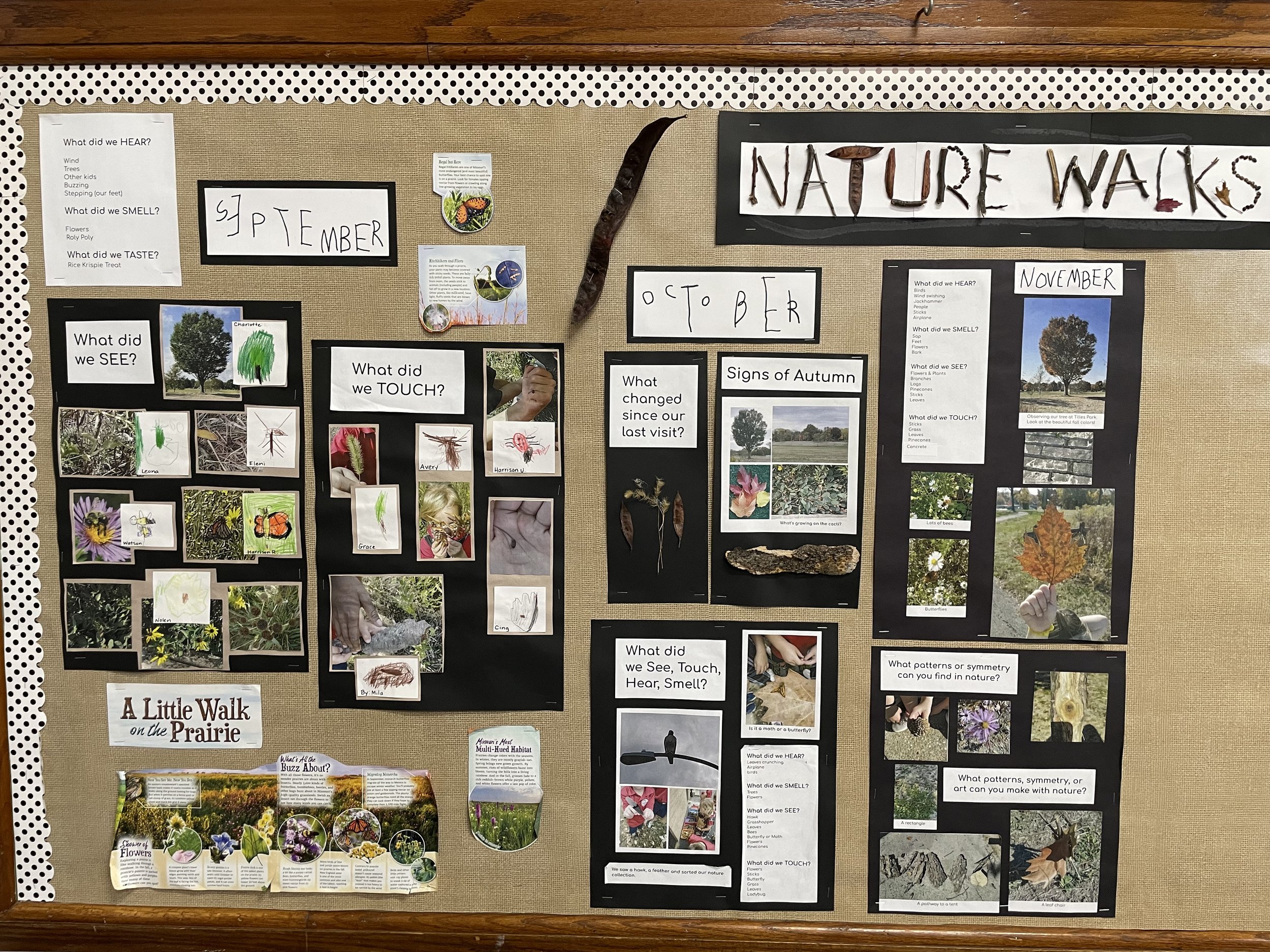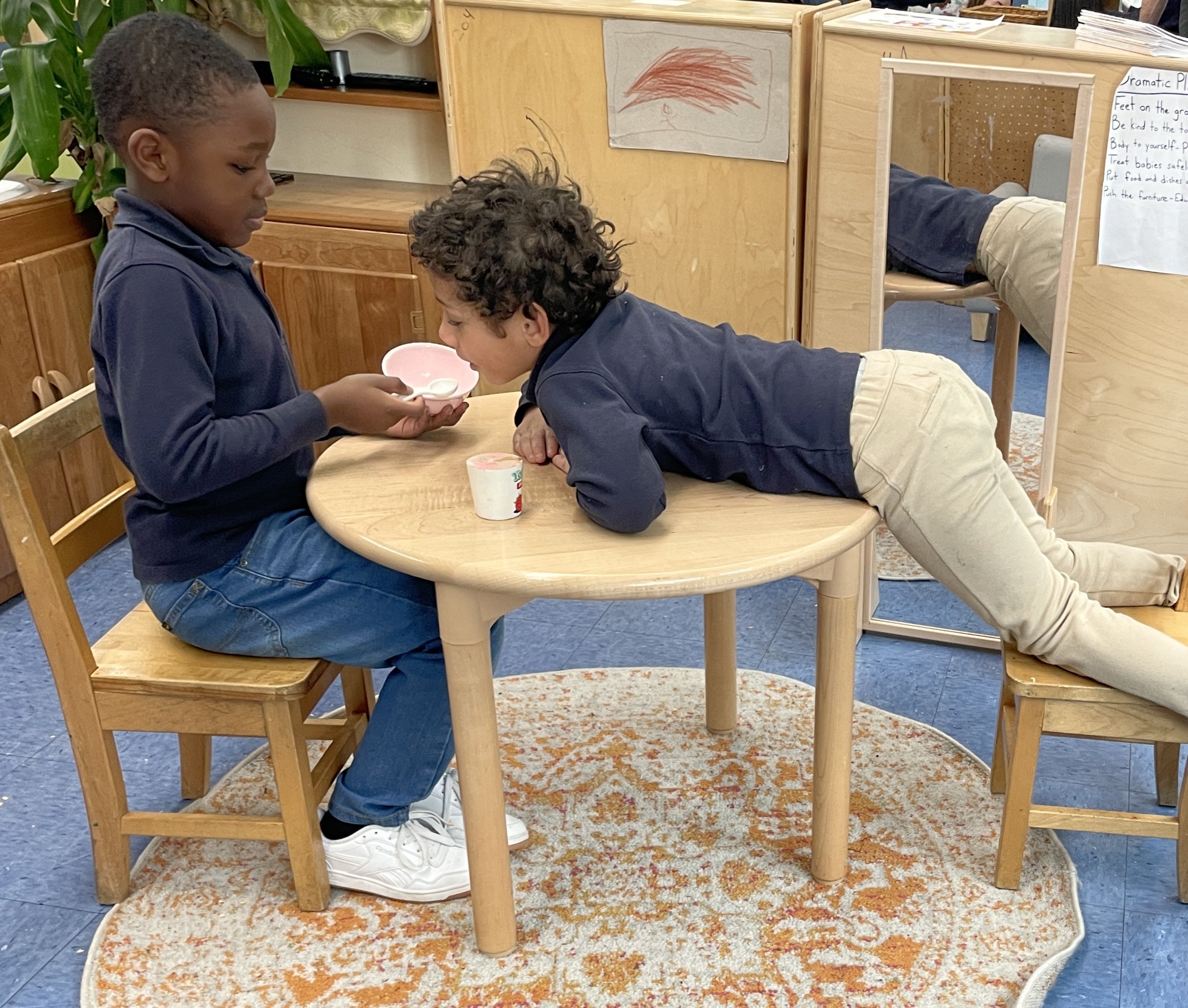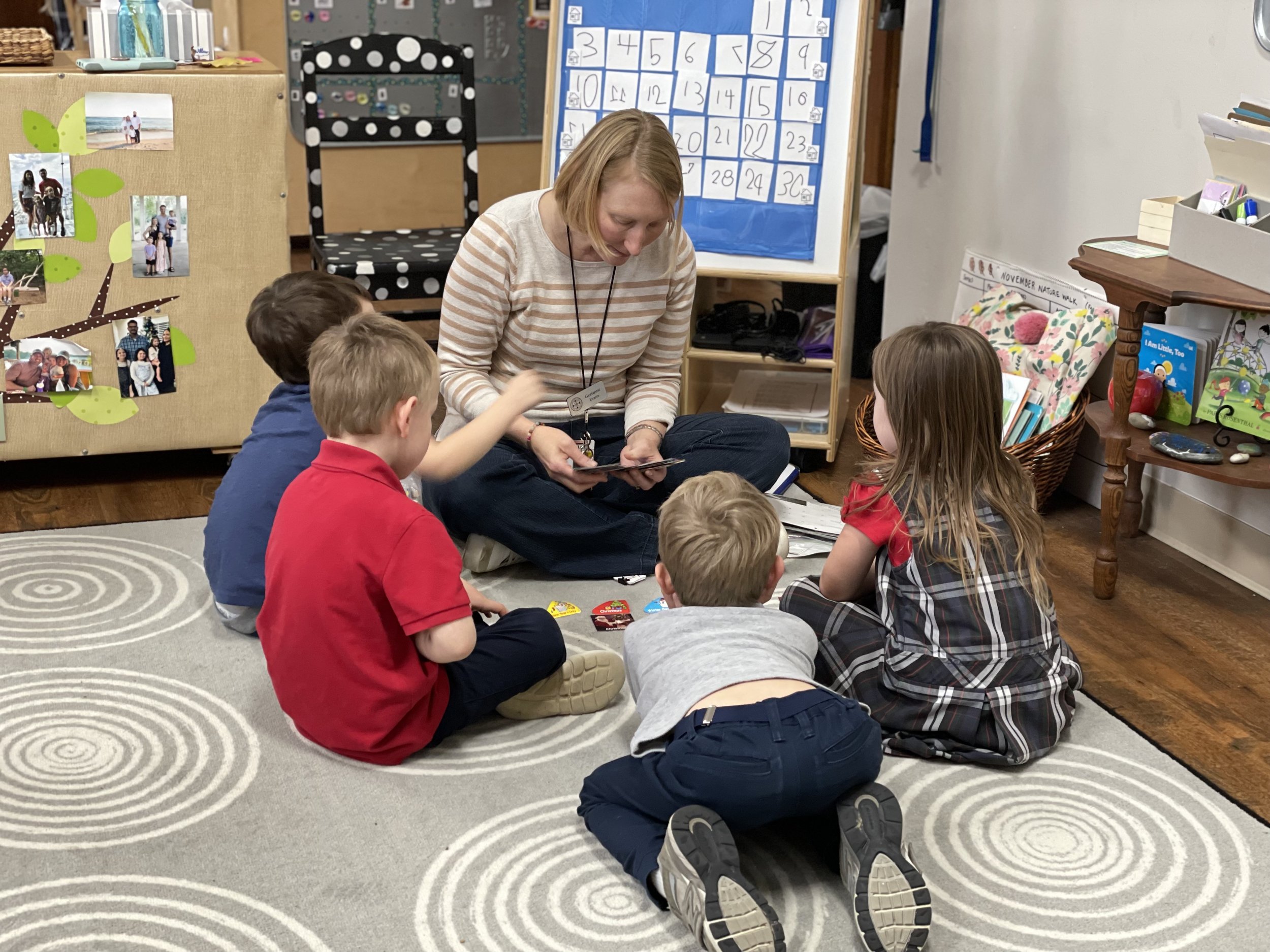Self Portraits, JK class, South City Catholic Academy, St. Louis, MO.
How was your passage into the new year? Ours was full of grandchildren and a bonfire and skiing all together on beautiful snow despite the wildly unpredictable weather in Vermont.
We are full of gratitude for our year of work with several wonderful schools and all the teachers who are working to make learning more interesting, meaningful, and beautiful for their students…who want to create lasting learning that makes a difference in children’s lives now and into the future.
We visited one of the schools where we work the week after Thanksgiving in St. Louis, South City Catholic Academy (SCCA). We found many aspects of student and teacher work that are an inspiration to us! And we found teachers eager to embrace ever new ways to engage their students in learning that is transformational.
The Art Studio, South City Catholic Academy
One of the ways that we work is to photograph evidence of vibrant learning in the environment, in organization and materials, in student-to-student sharing and collaboration, in teacher to student relationships, and in learning made visible often displayed on the walls. We then project the images back to the teachers and ask them what they see. They appreciate seeing through our lens what is working well and feel pride in their progress as a community of learners. Several of those images are included in this blog post.
Documentation, South City Catholic Academy
Louise visited the school where we work in Somerville, MA the second week of January, Prospect Hill Academy (PHA). Likewise, at PHA there was much evidence of progress and joy in student work. One exceptional hour was shared observing in Peter Coner’s kindergarten classroom as children worked in centers…dramatic play, the studio, blocks, construction, the library… followed by sharing by several students with the whole class.
A protocol for responding to the student work frames the conversation for the students. The questions that frame the conversation are: What do you notice? What questions do you have? Are you inspired to do your own work, or do you have suggestions for your classmates who are sharing today?
Afterwards, the kindergarten and pre-K teachers who were observing shared with the students what they had learned from them. The kindergartners were rapt in attention listening to what the adults had noticed and appreciated by spending an hour observing their work and play.
The following dialogue was recorded during that observation by one of our team of observers. The dialogue took place in the dramatic play area where a group of children were pretending to be cats.
Pretending to be cats, Prospect Hill Academy, Peter Coner’s classroom, Somerville, MA
Peter (teacher): What do cats eat?
All of the group: Cat food!
Edwensky: Kitties, I have some orange juice for you.
Dorothy: I don’t think I ever saw cats eat orange juice.
Khalessia and Dorothy: Meow, Meow.
Edwensky: Kitties, time to eat!
Khalessia and Dorothy: Meow, Meow.
Edwensky: Kitties, do you want to go for a walk?
Khalessia and Dorothy: Meow, Meow.
Edwensky: I think that “Meow” means “yes.”
Khalessia and Dorothy: Meow does mean “yes.”
(Edwensky leads the cats around)
Dorothy: Cats twirl like this. And they pick the best spot. Meow.
(Dorothy twirls in place and lies down on the sofa.)
Dorothy: Cats lie on top of each other. I want to lie on top of you!
(Dorothy and Khaleesia lie on the sofa together for a moment.)
Khalessia: Hey, let’s go wake up daddy.
(both girls crawl over to Edwensky who is lying under the table.)
“Cats lie on top of each other.” Dorothy
The observer commented afterwards,
I was impressed with the extent to which kids embody animals as a way of learning about them. They really moved around like cats.
And, I noticed all the negotiation of the story and of the physical space. There was such subtlety in the students’ communication, both physical and verbal. They are developing an understanding of how to "read" one another.
This was an experience of pretend play that was captured during the one hour of observation. It represents the value of observing and of recording the words of the children and capturing their play in photographs. We now have documents that we can study together and imagine how to further support this pretend play.
There is much research done on the value and importance of pretend play for young children…role play, social/emotional growth, negotiation, collaboration, storytelling and story-acting, perspective taking, self-regulation, empathy.
In their book, Play, Playfulness, Creativity and Innovation, Patrick Bateson, and, Paul Martin explore how creativity and divergent and innovative thinking have their roots in pretend play in childhood.
What a wonderful way to conclude and begin our year…with two schools where curiosity and joy in learning are alive and thriving. Here’s to a year of learning and of joy for all of us.
Playing Games, South City Catholic Academy
.

